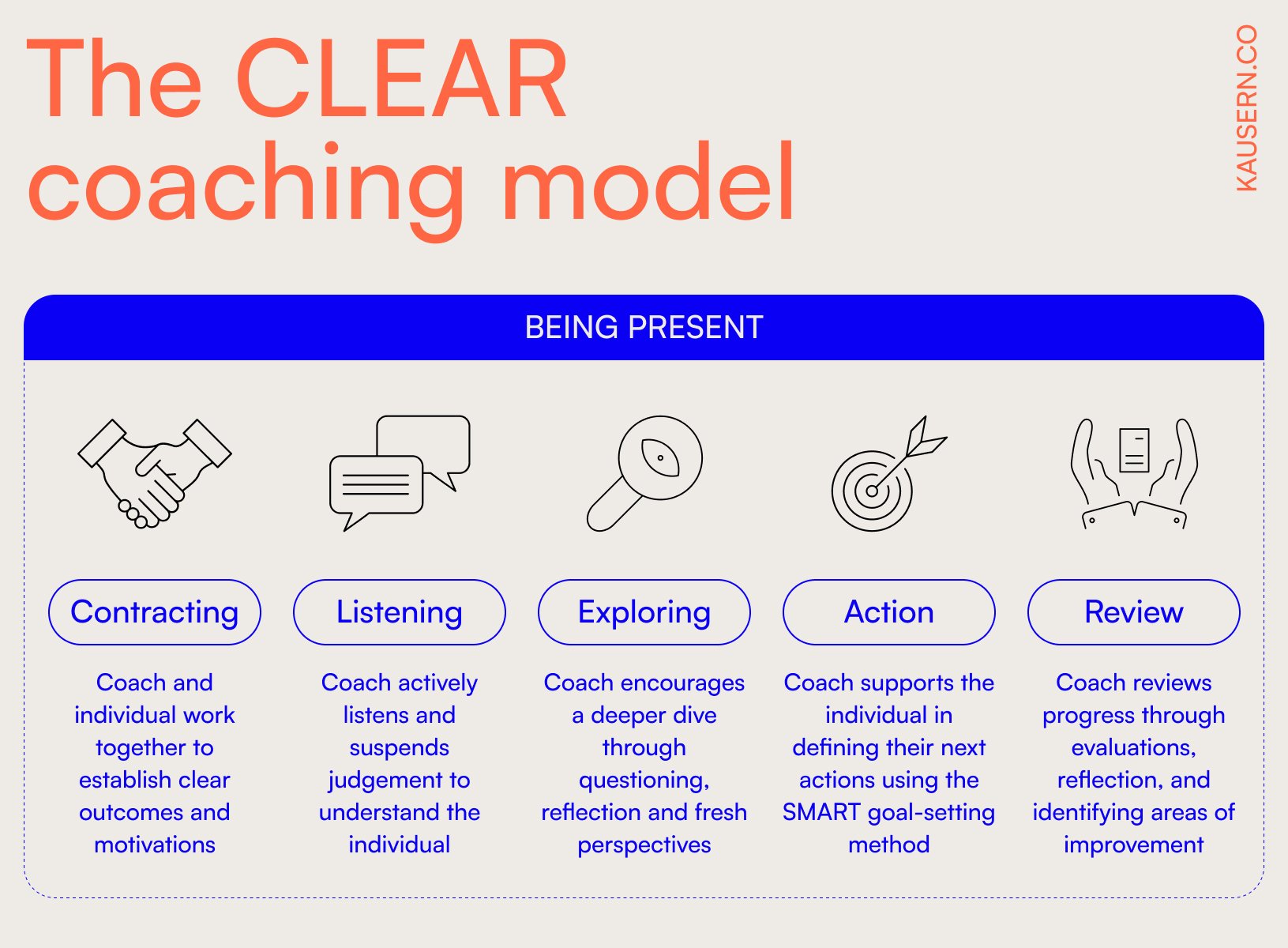The CLEAR Coaching Model
“A good coach can change a game. A great coach can change a life” - John Wooden.
I find the CLEAR coaching model developed by Peter Hawkins the most structured and easiest to follow, both as an active coach and managing in the workplace.
Organisations and individuals are investing in coaching simply because it works. Coaching helps individuals clearly see themselves and the possibilities ahead of them. A coach provides supportive space and structure for individuals to self-reflect so they can better understand their goals and identify roadblocks and the behavioural change and actions needed to overcome these barriers to achieve their goals.
Here's a breakdown of the CLEAR model.
Contracting
The first step involves establishing a clear agreement between the coach and the client, or the manager and their staff, regarding the goal of the session. This is important to establish a clear outcome and the motivations behind it. Here are some examples:
“John, what would you like to talk about today? Why is this important to you?”
“John, I noticed the Alpha project is behind its schedule. I’m curious to know what happened. I would like to explore with you how I can support you better to get it back on track.”
Listening
In the second step, the coach/manager actively listens and creates a safe and supportive space for the individuals to express their thoughts, feelings and concerns. By using empathetic listening skills and suspending judgement, the coach pays attention to both the content (what was said) and the emotions behind the words (what was not said).
Exploring
In this step, the coach/manager helps the individual delve deeper into their situation by asking insightful questions to help them reflect on their current reality, the possibilities of a better future, explore different perspectives, and uncover potential barriers or opportunities. The coach/manager encourages the individual to think creatively, leverage on their strengths, and consider alternative viewpoints to get to their outcomes.
Action
Once the individual has gained clarity and explored various options, the next step is to define actions. In this phase, the coach supports the individual in developing a specific and realistic action plan using the SMART goal-setting method.
Review
The final step is for accountability. The coach/manager will review the individual’s progress. This involves evaluating the effectiveness of the actions taken, reflecting on lessons learned and insights gained, celebrating successes and identifying areas for improvement.
One more important core skill that needs to be incorporated in ALL the above steps is Being Present. It is an underlying principle that runs throughout the entire CLEAR model. “Being present” is an intentional act of being fully engaged and attentive to the individual. The most important posture a coach/manager needs to have is “It’s not about me. It’s all about my trainee. I’m 100% here to support my trainee.” ●

